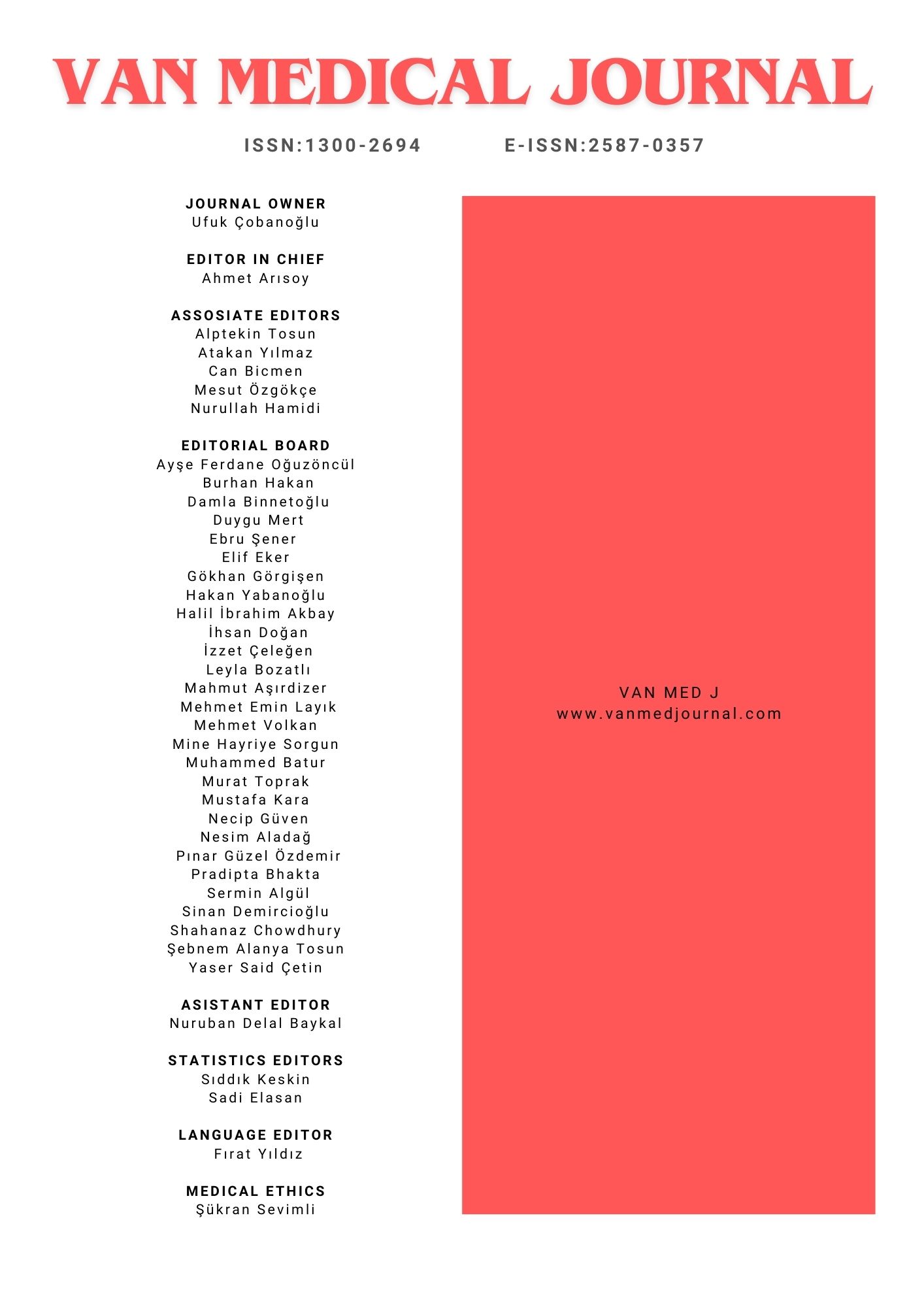Evaluation of The Relationship of Necrotizing Enterocolitis and Mortality in Premature Babies
İbrahim Deger1, Sabahattin Ertuğrul1, ilyas Yolbaş21Department of Pediatric, Division of Neonatology, Dicle University, Diyarbakır, Turkey2Department of Pediatric, Dicle University, Diyarbakır, Turkey
INTRODUCTION: Necrotizing enterocolitis is one of the most common serious gastrointestinal problems in neonatal intensive care units. In this study, the relationship between necrotizing enterocolitis cases and mortality was evaluated.
METHODS: This study included 157 cases of necrotizing enterocolitis of stage II and above, who were followed up and treated in Department of Pediatrics, Neonatal Intensive Care Unit between June 2019 and June 2021.
RESULTS: 51% (80) of the cases were female and 49% (77) were male, birth weight was 1147±436 g, gestational age was 27.9±3.1 weeks, maternal age was 29.2±7.4, and maternal pregnancy number was 3.59±2.2. Distribution by birth weight, ≤1000 gr 41.4%(65), 1001-1500 g 40.8%(64), 1501-2000 g 13.4%(21), 2001-2500 g 3.2%(5) and 2501 g and above 1.3% (2) found. The distribution of the cases according to the gestation age was found to be ≤27 weeks 42.7% (67), 28-32 weeks 49% (77), 33-36 weeks 7.6% (12), and 37 weeks and above 0.6% (1). There was no statistically significant relationship between gender and maternal age and mortality. As the birth weight and gestational age decreased and the number of maternal pregnancies increased, mortality and frequency of necrotizing enterocolitis were found to increase statistically significantly (p<0.05).
DISCUSSION AND CONCLUSION: Decreased birth weight and gestational age in premature infants in the neonatal period cause a serious increase in both the frequency of necrotizing enterocolitis and the mortality rate due to necrotizing enterocolitis.
Prematüre Bebeklerde Nekrotizan Enterokolit ve Mortalite İlişkisinin Değerlendirilmesi
İbrahim Deger1, Sabahattin Ertuğrul1, ilyas Yolbaş21Dicle Üniversitesi Tıp Fakültesi, Neonatoloji Bilim Dalı, Diyarbakır2Dicle Üniversitesi Tıp Fakültesi, Çocuk sağlığı ve hastalıkları, Diyarbakır
GİRİŞ ve AMAÇ: Nekrotizan enterokolit, yenidoğan yoğun bakım ünitelerinde en sık görülen ciddi gastrointestinal problemlerin başında gelmektedir. Bu çalışmada Nekrotizan enterokolit olguları ve mortalite ilişkisi değerlendirildi.
YÖNTEM ve GEREÇLER: Bu çalışma Haziran 2019-Haziran 2021 tarihleri arasında Çocuk Sağlığı ve Hastalıkları Anabilim Dalı Yenidoğan Yoğun Bakım Ünitesi’nde evre II ve üstü Nekrotizan enterokolit tanısı ile takip ve tedavisi yapılan 157 olgu çalışmaya alındı.
BULGULAR: Olguların %51(80)’i Kız ve %49(77)’si Erkek, Doğum ağırlığı 1147±436 gr, Gestasyon yaşı 27.9±3.1 hafta, Anne yaşı 29.2±7.4 ve Anne gebelik sayısı 3.59±2.2 bulundu. Doğum ağırlığına göre dağılım, ≤1000 gr %41.4(65), 1001-1500 gr %40.8(64), 1501-2000 gr %13.4(21), 2001-2500 gr %3.2(5) ve 2501 gr ve üstü %1.3(2) bulundu. Olguların gestasyon haftasına göre dağılımı ≤27 hafta %42.7(67), 28-32 hafta %49(77), 33-36 hafta %7.6(12) ve 37 hafta ve üstü %0.6(1) bulundu. Cinsiyet ve anne yaşı ile mortalite arasında istatistiksel olarak anlamlı ilişki bulunmadı. Doğum ağırlığı ve gestasyon yaşı azaldıkça ve anne gebelik sayısı arttıkça mortalite ve nekrotizan enterokolit sıklığının istatistiksel olarak anlamlı şekilde arttığı bulundu (p<0.05).
TARTIŞMA ve SONUÇ: Yenidoğan dönemindeki prematüre bebeklerde, doğum ağırlığı ve gebelik haftasının azalması, hem nekrotizan enterokolit sıklığında hem de nekrotizan enterokolite bağlı mortalite oranında ciddi artışa neden olmaktadır.
Corresponding Author: İbrahim Deger, Türkiye
Manuscript Language: Turkish

